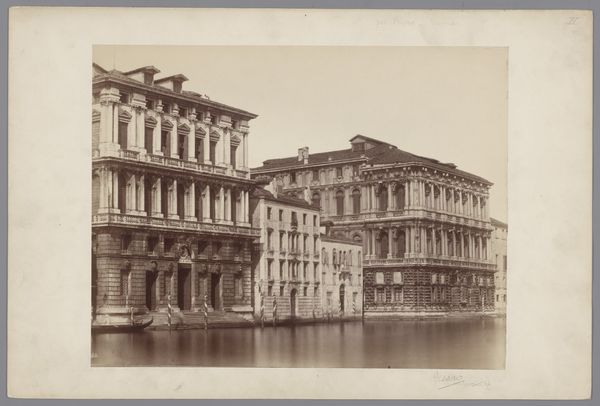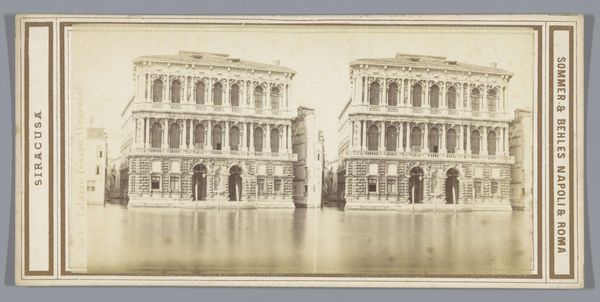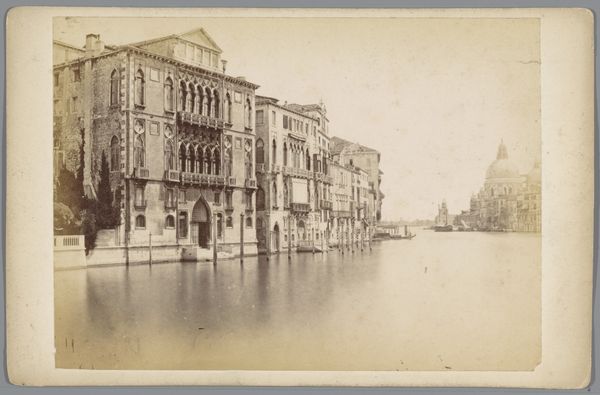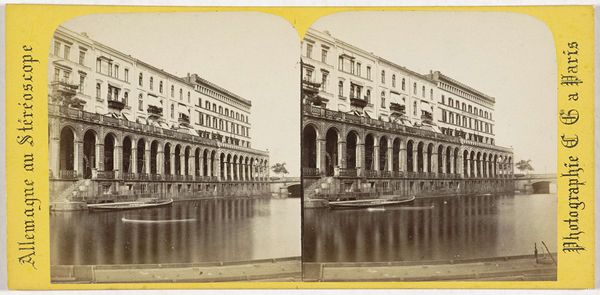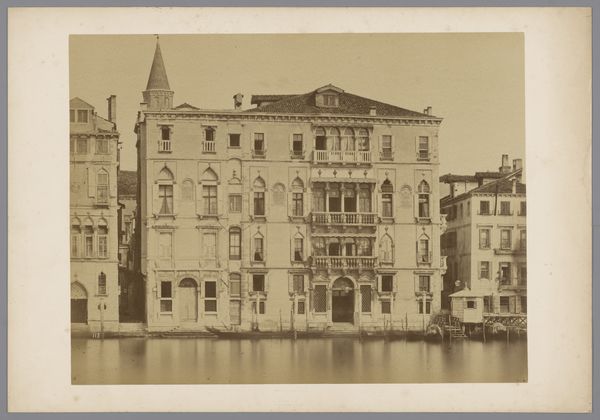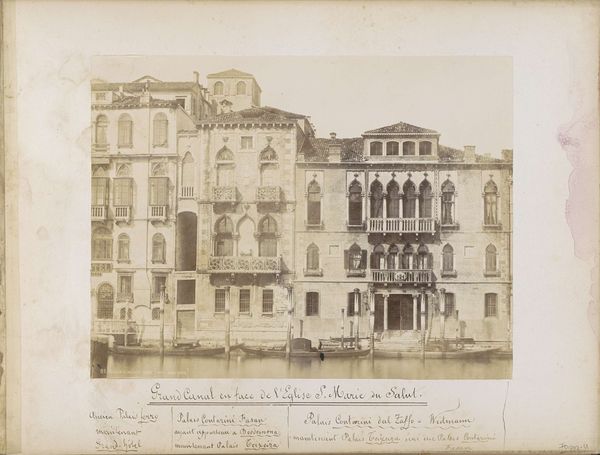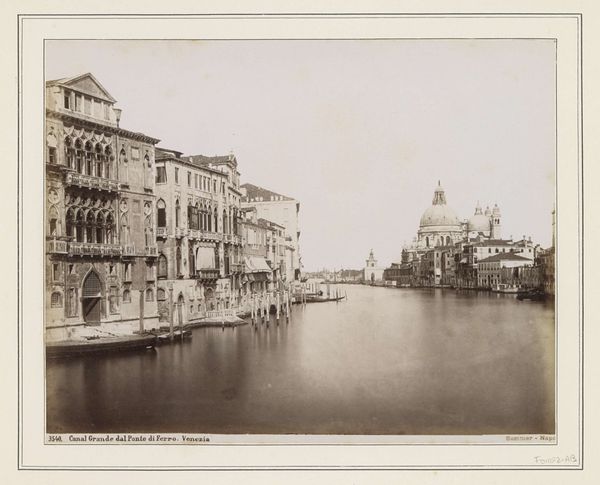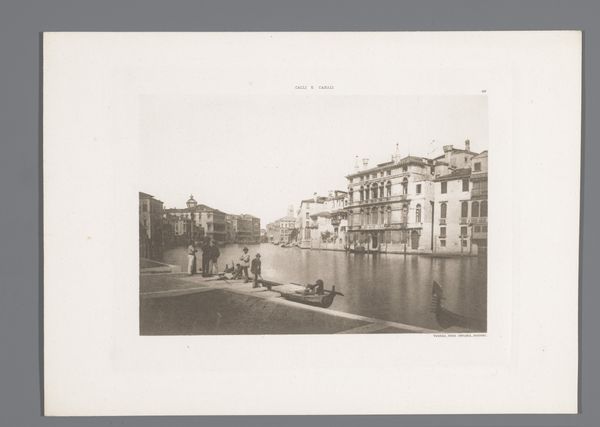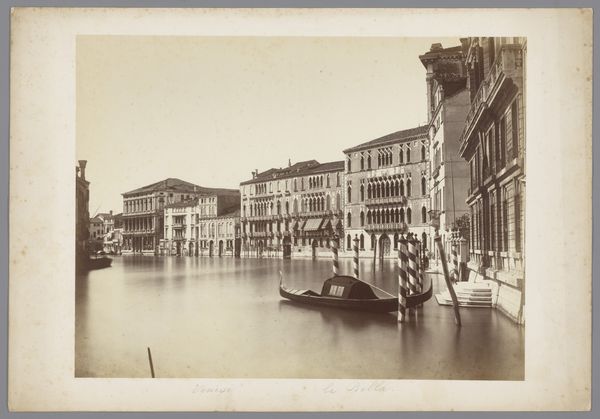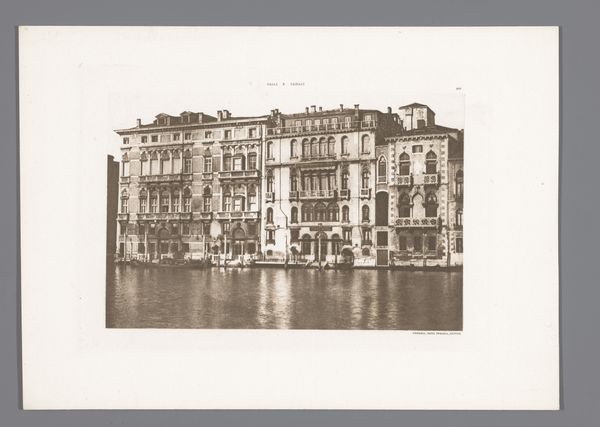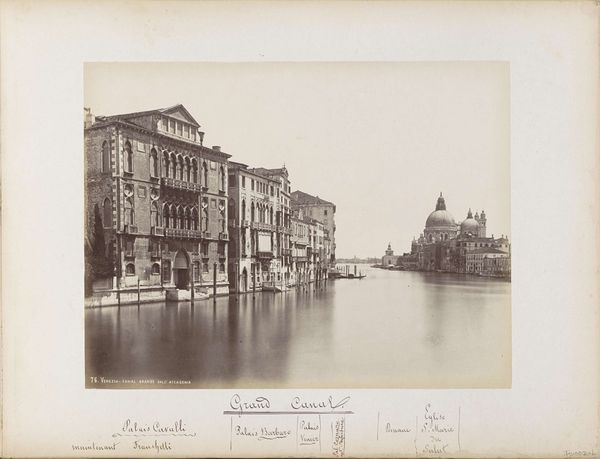
Gezicht op Ca' Rezzonico, Palazzo Giustinian en Ca' Foscari in Venetië c. 1850 - 1880
0:00
0:00
photography, gelatin-silver-print
#
photography
#
orientalism
#
gelatin-silver-print
#
cityscape
Dimensions: height 82 mm, width 175 mm
Copyright: Rijks Museum: Open Domain
Curator: Let's talk about this fascinating image, “Gezicht op Ca' Rezzonico, Palazzo Giustinian en Ca' Foscari in Venetië,” a photograph created by Carlo Naya sometime between 1850 and 1880. Editor: My first impression is of a certain stillness. The water looks like mercury, reflecting the grandeur of those buildings with an almost unsettling calm. Curator: Yes, Naya captures a specific moment, and indeed the rise of photographic practices contributed much to transforming urban imaginaries in the mid-19th century. Think about how the expansion of tourism relied on representing and consuming iconic city views such as this one, with those magnificent palazzi fronting directly on the Grand Canal. Editor: Absolutely. And looking at the structures themselves, the repetition of rectangular forms - the windows, the stories of each building, creates a kind of visual rhythm that's quite compelling, but ultimately fairly uniform, too. I can almost imagine it being a little…oppressive, despite the undeniable beauty. Curator: It is interesting you mention that. Certainly the image, and many like it, contributed to an ongoing idealization of Venice which masked its own social complexities. The composition focuses, I would suggest, on a specific kind of elite experience and aesthetic that was marketed, and sold, very strategically, as an allegory of Venice itself. Editor: You know, I can also observe the delicate play of light and shadow here, how Naya manages to suggest texture, depth, and detail with limited tonal range, and the sepia tones bring to it an interesting feel…a certain romantic distancing, you might even say. Curator: That's true, and this formal consideration serves the political function of establishing photography as an art form in itself. Editor: Well, seeing it again through your lens, I appreciate now this additional layer of analysis to the social function around it, while the technique offers a compelling counterpoint, with its formal achievement in representing the specific scene and era. Curator: Likewise, looking at the picture again now, through your focus, I was missing the beautiful subtleties in light.
Comments
No comments
Be the first to comment and join the conversation on the ultimate creative platform.
